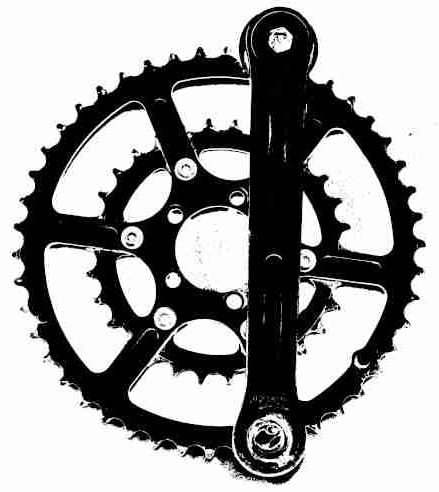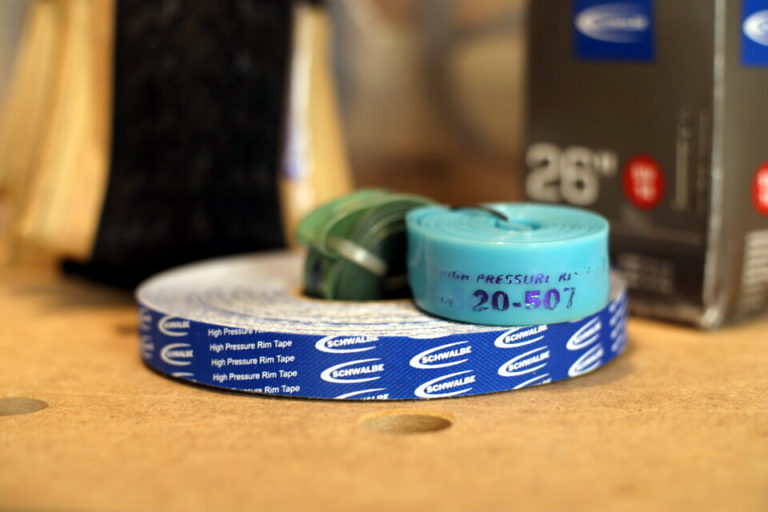Diagnosing Lateral Play in Wheel: 4 Common Causes
Sideways play in your bicycle wheel indicates a serious mechanical issues in the wheel and should be addressed immediately. I wrote this article to help you diagnose the underlying issues.
There are four common causes of lateral play in the wheel: wheel loose in the frame, loose bearings, worn bearings or a broken axle. All of the causes are a serious safety concern but can fortunately be quickly diagnosed by visual inspection and a few common tools.
Next we will go through how you can identify and fix each of the four issues.

Cause 1: Axle loose in frame
One possible source of sideways play in the wheel is that the wheel is not properly secured to the bike frame. This is a very serious safety hazard and should be checked first.
Wheels mount to the fork or the rear dropouts using one of the following techniques: a threaded axle and nuts (older bikes), a quick release skewer or a through-axle with a nut-like end cap (recent models).
All of the axle types need to be properly tightened to keep the wheel in place. If they are loose, the wheel can come off the frame or fork during riding. If there’s tangible play in the wheel, the mount may be very loose indeed.
Diagnosis: Check if the wheel axle moves with respect to the frame or fork. Check if the Quick Release skewer or wheel nuts feel loose.
Fix: Tighten the quick release skewer, screw or axle nut. Observe tightening torque recommendations (common sense goes some way here too).
Cause 2: Loose bearings
Another possible issue behind lateral play in wheel is loose bearings. This is particularly common in bikes using the traditional cup-and-cone type hub bearings, which means most bikes excluding recent quick release and through-axle models (which use cartridge bearings).
Loose bearings cause accelerated wear and may jam the wheel in the worst case. While not as hazardous as a loose axle, loose bearings should be re-adjusted without delay.
Diagnosis: When pushing the wheel sideways, check if the hub moves relative to the axle. If it does and the wheel rides OK without a lot of noise, you probably have loose bearings.
Fix: Re-adjust the bearings. This is part of standard hub maintenance but takes some skill and a pair of thin cone wrenches. Unless you have the skills and tools, take the bike to a mechanic.
Cause 3: Worn bearings
Lateral play in wheel can also be caused by worn bearings. Whether sealed cartridge or cup and cone, all bearings eventually wear out. Play is one symptom; uneven sticky running and an unhealthy noise are others.
Diagnosis: Remove the wheel from the frame and spin the axle by hand. If it does not spin freely, the bearings are probably bad. (With cup and cone bearings, make sure the bearing is not over-tightened.)
Fix: Replace the bearings. With sealed cartridge bearings, you replace the whole bearing units. With cup and cone, replace the cones and balls; if the cup is damaged, you must replace the whole hub.
Cause 4: Broken axle
Lateral play in wheel can also be caused by a real mechanical failure: broken wheel axle. Such a failure will usually give also other indication like high friction and rough grinding sounds.
Breaking rear axles are a common issue in mountain bikes with traditional quick release hubs. It still occurs with the stronger through-axle models that are in exceptionally heavy use.
Diagnosis: Remove the wheel from the frame. Pull on the ends of the axle. If the axle is broken, you will get the two halves out without using much force.
Fix: Replace the axle. You can find a new axle online or at your local bike shop. Note that the bearings are probably damaged too and should be replaced. If the bearing races are damaged you may have to replace the entire hub.


